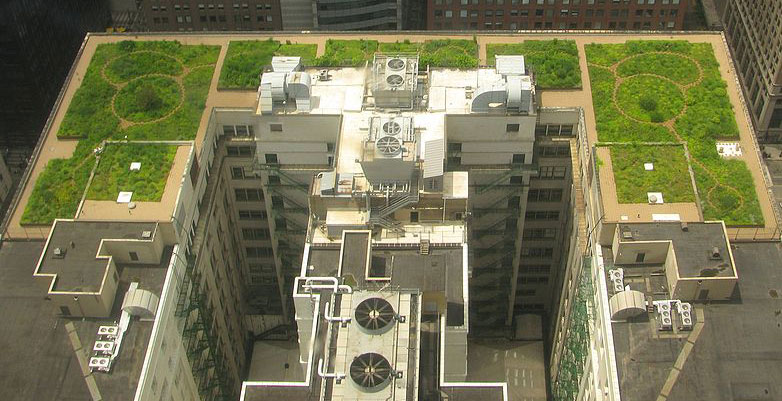
Green roofs must be waterproofed in order to sustain a localized ecosystem capable of supporting fresh vegetation. Roofs in general must also be energy efficient in today’s energy market to save on long term costs to the home owner. Waterproofing and energy efficiency are often thought of as mutually exclusive in the roofing industry. One of the many benefits of a green roofing system is the ability of the system to reduce thermal absorbance or increase energy efficiency by expelling excess heat.
Current green roof methodology states that inverted roof assemblies (insulation installed about water proof membranes) are acceptable for additional water proofing, even though moisture moves through the insulation, compromising the thermal resistant properties of the insulation. However, what is currently unknown is to what extent the energy efficiency of a green roof can be manipulated by structural changes to the roofing system or by placing insulation at different points in the roofing system.
In an study by the Matthew J. Normandeau and Michael B. Waite (2011), researchers analyzed inverted roofing systems and conventional roofing systems, and compared their structural properties against each other to determine the best structure for optimal water proofing and energy efficiency performance in green roofing systems.
Researchers compared inverted roof systems where insulation, drainage layers, and landscaping are located above the waterproof membrane and conventional roof systems where insulation is located underneath the membrane. Additionally researchers compared the locations of draining layers and the amount of air below the insulation layer in the respective roofing systems.
The authors also calculated a mathematical model of the flow of heat and the flow of water at the membrane layer. The permeability of the green roof was calculated using the grain size of the soil and the hydraulic gradient of the soil.
Finally researchers calculated the air underneath the roofing membrane by analyzing the total square footage of the buildings in the study as well as the HVAC system volume. Three different green roofs were tested in high, medium and low precipitation areas (like Bryan, TX) and had approximately the same thermal and waterproofing specifications.
Data from the study showed that placing a drainage layer below the insulation layer in cooler climates with higher precipitation rates can have a significant impact on energy efficiency, increasing heating energy needed to maintain homeostasis in the home because cool water can pass closer to a home’s heat source. Adding to the additional loss of heat, researchers found that the cooler and wetter the climate the more energy or heat was lost to the environment, reducing heat in the home during summer, but also reducing it during winter.
In an effort to mitigate the loss of heat during the winter, the study showed that increasing the thickness of the insulation by 50% successfully mitigated the heat loss and added additional temperature regulation properties.
As popularity continues to increase in green roofing, efficiency of green roofing systems will also improve. Bryan roofing contractors should always structure the roofing system layers in an order that will preserve cooling properties during the summer months and insulating properties during the winter months. Additionally that system must be layered according to manufacturer specifications in order to maintain existing product warranty.
Schulte Roofing is a roofer with over 18 years of service in the local communities. Utilizing over 100 years of combined roofing experience, Schulte Roofing structures roofing systems to provide the maximal cooling and insulating benefits for each geographic and ecological system. For more information about which green roofing system will work best for your home and local community, contact Schulte Roofing today.
Reference:
Normandeau, M. J., Waite, M., B. Balancing Waterproofing and Thermal Performance for Vegetative Roof Assemblies. 2011. Proceedings of the 2011 International Roofing Symposium
Image by TonyTheTiger
